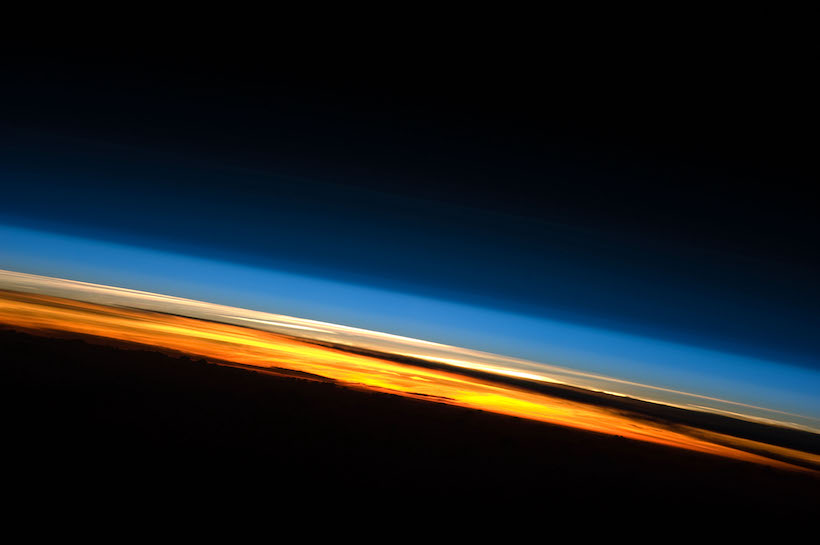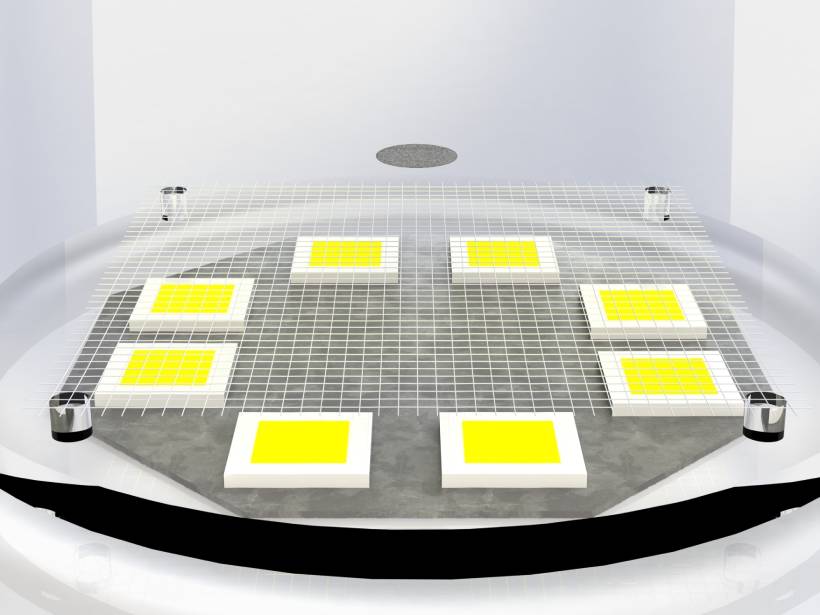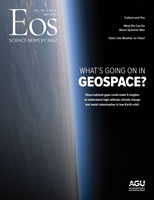Flying saucers might someday flit through Earth’s upper atmosphere, at altitudes above 50 kilometers where the mesosphere starts. With their diameters likely reaching just a few centimeters, the saucers aren’t large enough to cause much of a fuss. Instead, they’ll endow climate scientists with measurements of temperatures, pressures, wind speeds, and other parameters in the mesosphere, a poorly studied region of the atmosphere.
Researchers from the University of Pennsylvania used a phenomenon known as photophoresis—a fluid flow created by light—to levitate small, thin disks for up to about 30 seconds per flight. The aerial platforms were created and tested by the researchers in late 2019, and the results were reported in February in Science Advances.
“It’s pretty cool,” said Igor Bargatin, an associate professor and leader of the research team. “The concept of using photophoresis to make structures fly has been around a while—a bunch of patents were even published. But nothing was ever realized.”
The Pennsylvania team—especially graduate student Mohsen Azadi—turned the concept to reality using disks of mylar film roughly 6 millimeters in diameter and just 500 nanometers thick. “Think of it as cling wrap but about 50 times thinner,” said Bargatin. They coated the bottom of the disks with a 300-nanometer layer of carbon nanotubes.
The researchers placed their test disks inside a vacuum chamber, where the pressure was reduced to levels comparable to those in the mesosphere, Bargatin said. The disks were illuminated by a ring of eight LED arrays placed just below the acrylic chamber.
Gas molecules below the disks were briefly trapped by the bumpy carbon nanotubes. The molecules ricocheted between nanotubes, which were warmed as the disks absorbed light, gaining energy with each encounter. When they finally escaped, the molecules moved faster than molecules that bounced off the smooth top surface. The momentum that moved from the gas-surface connections led to an upward recoil force that makes the sample levitate.
The bumpy bottom surface would provide an upward thrust regardless of the direction of the incoming light, Bargatin noted. As long as heat was efficiently distributed throughout the flyer, the photophoresis effect would generate upward thrust, allowing the disk to stay aloft even though its top surface was receiving more light than the bottom.

Where Few Probes Have Gone Before
Bargatin and his team suggested that such disks could make effective platforms for probing the mesosphere, the layer above the stratosphere. It begins at an altitude of 50 to 65 kilometers and extends to 85–100 kilometers. It is the atmosphere’s coldest layer, with temperatures as low as minus 140°C.
The air in the mesosphere is too thin to support balloons or aircraft but too thick for satellites to fly through, so it is studied primarily through remote sensing or through brief incursions by sounding rockets.
This part of the atmosphere is difficult to reach. The air is too thin to support balloons or aircraft but too thick for satellites to fly through, so it is studied primarily through remote sensing or through brief incursions by sounding rockets.
As a result, “we don’t have a complete picture” of the mesosphere, said Daniel Marsh, a senior scientist at the National Center for Atmospheric Research who was not involved in the study. “Apart from simply wanting to know more about the least measured but fascinating part of our atmosphere, the mesosphere is the transition region between the lower atmosphere and space,” he said. “Space weather that impacts communications and GPS systems can be caused by atmospheric waves that originate from weather in the troposphere and pass through the mesosphere. We would like to track those waves to understand how they propagate and predict their impact.”
Photophoresis-powered flyers scaled up to diameters of 6 centimeters or so should be able to carry payloads of up to about 10 milligrams, Bargatin said—large enough to incorporate a radio transmitter, battery, and tiny sensor package. Arrays of disks could be linked by carbon fibers to provide total payload masses of a gram or more.
Getting to the mesosphere won’t be easy, though. The disks might be delivered by a sounding rocket. And if they were launched into a polar summer, with uninterrupted sunlight, they might stay aloft for days or weeks—if scientists can find a way to keep them steady in mesospheric winds that can reach 100 kilometers per hour or higher.
Eventually, similar technology might even be used to explore Mars—especially at higher elevations, where atmospheric pressure is similar to that in Earth’s mesosphere—“right in the sweet spot of our experiments,” Bargatin said.
We’re not likely to see flying saucers flitting through the skies of Earth or any other world anytime soon, though. “Five to 10 years is probably a reasonable estimate,” said Bargatin, who hopes to create alliances with climate scientists to help refine and further the concept. “We have plans for growing the payload capability, and as we do, more potential applications are opening up. Eventually, we hope to operate at surface pressure, so we could make a lot of tiny robots to fly all around. But we have our work cut out for us.”
—Damond Benningfield ([email protected]), Science Writer
Citation:
Benningfield, D. (2021), Flying saucers could one day probe the mesosphere, Eos, 102, https://doi.org/10.1029/2021EO156268. Published on 25 March 2021.
Text © 2021. The authors. CC BY-NC-ND 3.0
Except where otherwise noted, images are subject to copyright. Any reuse without express permission from the copyright owner is prohibited.


